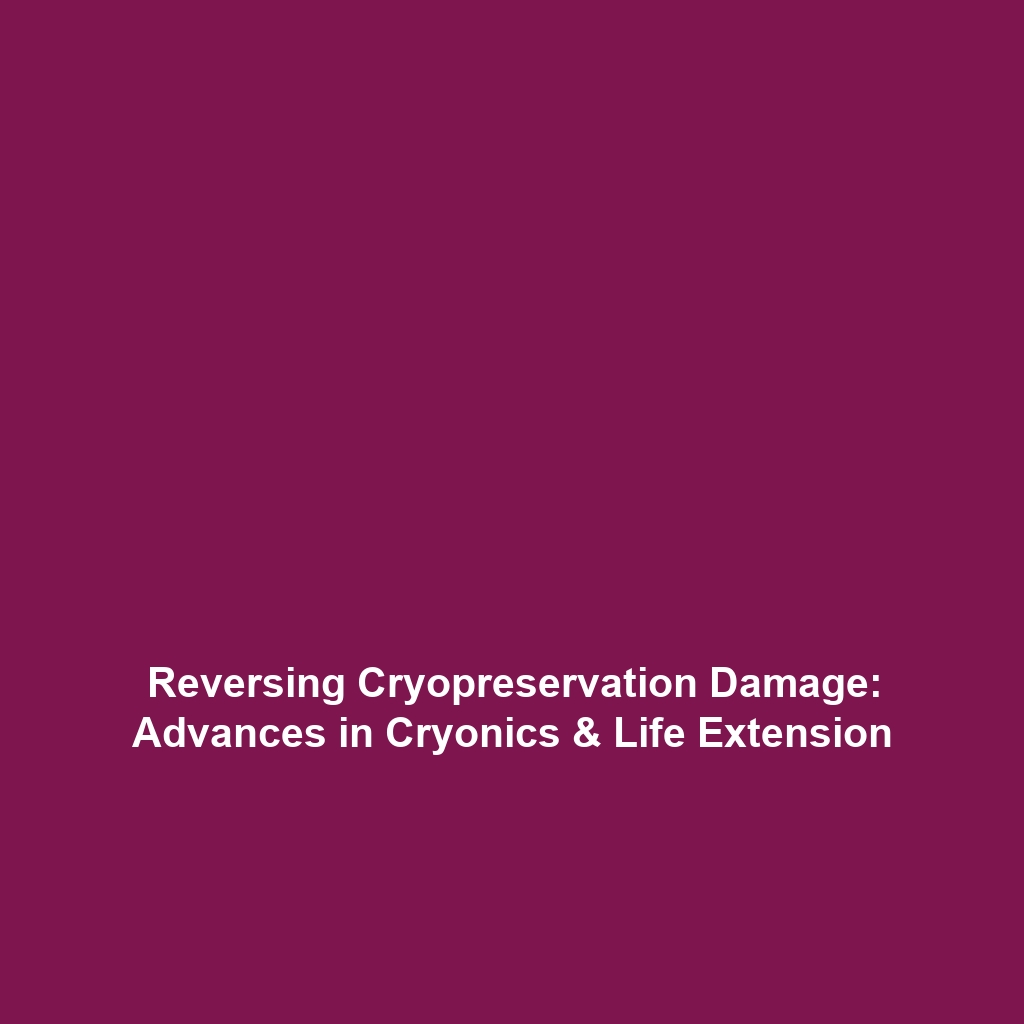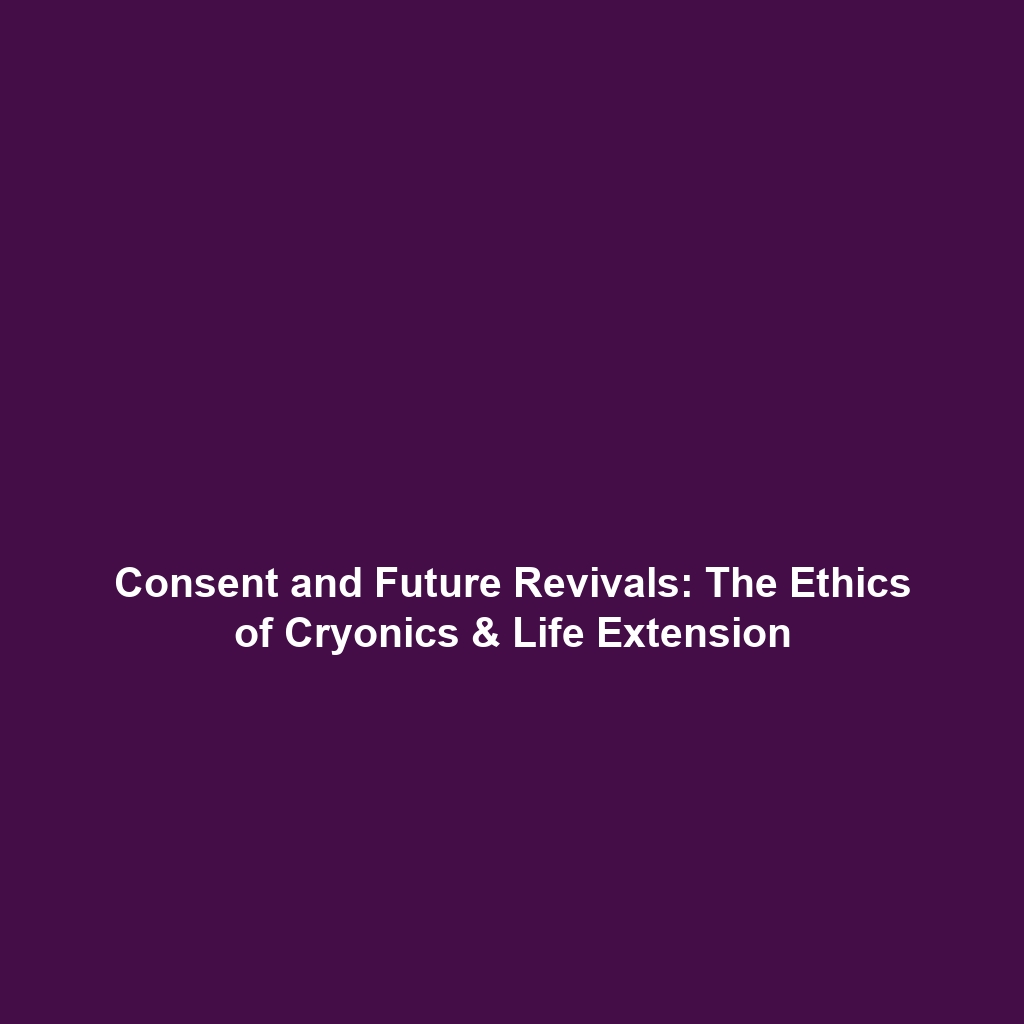Research Status: Vitrification Techniques in Cryonics & Life Extension
Introduction
Vitrification, a breakthrough in cryopreservation, aims to preserve biological tissues at ultra-low temperatures without the formation of ice. This technique holds significant promise in the fields of Cryonics and Life Extension, particularly as researchers strive to improve organ preservation for transplantation and potential revival. However, despite its advantages, current vitrification methods encounter substantial challenges—especially when applied to larger tissues, such as organs. This article delves into the research status of vitrification techniques and their implications for future advancements in cryonics and life extension.
Key Concepts
Understanding Vitrification
Vitrification involves turning a solution into a glass-like state through rapid cooling, preventing ice crystal formation that can damage cellular structures. This process is critical in both Cryonics and Life Extension as it aims to preserve viability during long-term storage.
Relation to Cryonics and Life Extension
In the context of cryonics, vitrification techniques could potentially allow for the preservation of whole organisms or organs for future revival, while in life extension, it offers pathways to improve organ transplantation outcomes by extending the shelf life of viable tissues.
Applications and Real-World Uses
Vitrification techniques have several practical applications in the realm of Cryonics and Life Extension:
- Organ Preservation: Vitrification is employed to enhance the preservation of kidneys and livers prior to transplantation.
- Tissue Engineering: The technique is used in laboratory settings to cryopreserve stem cells and tissues for regenerative therapies.
- Fertility Treatments: Vitrification is routinely used in oocyte and embryo cryopreservation, allowing for future pregnancies post-treatment.
Current Challenges
Despite the promise of vitrification, several challenges remain:
- Difficulty in achieving uniform cooling rates for larger tissues.
- Potential toxicity of cryoprotectants used in the vitrification process.
- Challenges in rewarming procedures that prevent ice crystallization upon revival.
Future Research and Innovations
Future innovations in vitrification techniques may include:
- Development of less toxic cryoprotectants to enhance preservation without harming cells.
- Advancements in controlled cooling and warming technologies to improve outcomes in cryopreserved tissues.
- Exploration of nanotechnology to create more efficient vitrification processes.
These breakthroughs could significantly impact the landscape of Cryonics and Life Extension, opening avenues for preserving larger organs and potentially extending human life.
Conclusion
In summary, while vitrification techniques show tremendous promise in the fields of Cryonics and Life Extension, ongoing research is crucial to overcoming the current challenges associated with larger tissue preservation. Continued exploration of innovative approaches will pave the way for significant advancements in organ conservation and life extension therapies. For more information about cryonics and cutting-edge preservation techniques, visit our related articles: Understanding Cryonics and Advancements in Life Extension Research.

